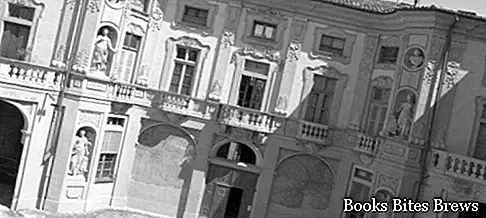What to see in Casale Monferrato, itinerary including the main monuments and places of interest, including the Paleologi Castle, Anna d'Alencon Palace, Synagogue, Treville Palace and Tornielli House.
Tourist information
Located in Piedmont in the province of Alessandria, on the banks of the Po, Casale Monferrato was a Roman settlement, later, in the ninth century, the city was subjected to the bishop of Vercelli.
After various dominations, starting from the fourteenth century, in the fifteenth century it became the capital of Monferrato.
After being contested between the Spaniards and the French, Casale Monferrato passed first to the Gonzaga family and then, in 1708, to the Savoy family.
In the historic center, which has maintained its original polygonal shape, there is the Paleologhi Castle, built in the fifteenth century on a project by Sammicheli, in the place where a fourteenth-century building once stood.
After being enlarged in 1561 by the Gonzagas, in the eighteenth century it was used as a military depot.
Near the suggestive manor there is the Palazzo di Anna d’Alencon, a late Gothic building with a fifteenth-century courtyard, inside which there is a large room with a coffered ceiling.
The sixteenth-century synagogue, erected on the spot where the ghetto once stood, has a meticulously decorated interior with large windows, where the Israelite museum is housed, which displays silver furnishings from the seventeenth and eighteenth centuries, and the library.
Casa Tornielli, in via Canina, is a fifteenth-century building characterized by a magnificent facade, with splendid mullioned windows and a Renaissance portal by Sammicheli, built in the sixteenth century.
Not far away is the Gambera-Mellana palace, with an interesting internal courtyard.
What see
The Church of Sant'Antonio Abate, with a single nave and chapels placed on the sides, was erected at the end of the sixteenth century above the ancient Church of Santa Maria degli Angeli.
Recommended readings- Alessandria (Piedmont): what to see in 1 day
- Langhe (Piedmont): what to see among castles, villages and vines
- Piedmont: Sunday day trips
- Oropa (Piedmont): what to see
- Cherasco (Piedmont): what to see
The Palazzo del Municipio, which was built in 1778 by Robilant by reworking a pre-existing sixteenth-century building, is characterized on the outside by a remarkable entrance hall with a vault supported by paired columns and by a large staircase formed by two ramps, while inside there are interesting frescoed rooms.
Nearby is the eighteenth-century Palazzo Treville, where various paintings are preserved, including a fresco by Guala, positioned on the ceiling of the grand staircase.
The eighteenth-century Church of Addolorata was erected with a central plan on a project by Magnocavallo.
Proceeding beyond Piazza Statuto you reach the Church of San Filippo Neri, built between the seventeenth and eighteenth centuries with a Greek cross plan, considered one of the best works of Guala, with countless paintings inside.
The Duomo, built in 1107 in the Romanesque-Lombard style, was renovated for the first time in 1215, following a fire.
Subsequently, at the end of the nineteenth century, it was profoundly transformed by the Mella.
The interior has five naves divided by pillars.
The Church of San Domenico was built in 1472 in late-Gothic forms, at the behest of William VIII Paleologo, later it was enlarged in the eighteenth century.
The facade is characterized by a remarkable stone portal from 1505, while inside there are valuable eighteenth-century paintings by Guala, a sepulcher by Sammicheli from 1527 and an eighteenth-century pulpit by Gasperini.
Via Saffi overlooks the Civic Tower, the result of a remake of Sammicheli carried out in 1512, relating to a previous tower dating back to the ninth century.
Next to the tower is the Church of Santo Stefano, built on a design by Guala in 1653, which houses interesting paintings from Cairo and Guala.




